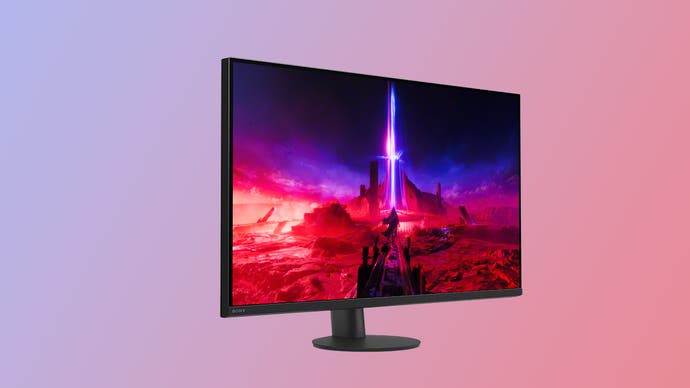Hands on with Sony's new Inzone M10S and M9 II gaming monitors: higher specs, new designs
Choose from a 1440p 480Hz esports OLED or 4K 160Hz LCD all-rounder.
As a display enthusiast, I was curious to see what Sony would bring to the table with its new line of Inzone monitors and based on first impressions, the results are interesting. After all, the initial lineup of Sony-developed PC monitors were good enough and had an interesting PS5-adjacent design, yet were nothing special in a crowded and competitive gaming monitor market. These two new monitors are much more my cup of tea - especially the £1199 Inzone M10S, which boasts an exciting 1440p 480Hz OLED panel that pushes the boundaries of motion clarity.
While clearly aimed at esports enthusiasts, especially with its optional 24.5-inch screen size mode and FPS Pro+ picture mode developed in cooperation with esports team Fnatic, my impression is that this is also a suitable monitor for someone interested in image quality as well.
Specifically, Sony is utilizing an MLA-infused panel with peak brightness up to 1300 nits. Combined with the 480Hz refresh rate, this is a killer spec sheet that allows extremely clean motion clarity that nearly eliminates any semblance of persistence blur while offering a very bright image alongside it. I only had a chance to briefly sample some gameplay on the monitor and only at 480Hz input but walked away wanting more. I need to do more testing with HDR content, refresh rates and resolutions, of course, but it's pretty dazzling on the face of it.
The M10S supports all the expected monitor features, of course, including VRR, Nvidia G-Sync and adaptive sync and, most importantly, both DisplayPort 2.1 and HDMI 2.1 - meaning that it's also a good fit for game consoles such as the PlayStation 5, if you so desire.
Furthermore, build quality is a gigantic step up from the previous Inzone monitors. The materials now feel much more premium to the touch and the stand is a work of art - a disc on which the monitor appears to balance, allowing full 360 degree rotation and tilt support. I wasn't a big fan of the oddball tripod stand on the prior generation monitors, despite the PlayStation vibes, but this one is gorgeous while requiring minimal desk space.
The £899 Inzone M9 II is a slightly different beast. This one uses a 4K 160Hz LCD panel, which is less exciting on the face of it, but it has a couple features up its sleeve that make it a lot more desirable than I first expected. Firstly, it offers full array local dimming (FALD) which basically alters the backlight of individual zones to overcome the native glow of the LED backlight. This has been very common in the TV space for years but it's still strangely uncommon in the PC monitor space. It makes a big difference and allows for both solid contrast and good HDR.

Secondly, backlight strobing is in - this basically allows for a dramatic improvement in motion clarity even at lower refresh rates. Based on the tests I saw in action, it's extremely promising and does provide near CRT-like clarity in motion. It's the combination of both strobing and local dimming that has me curious to spend more time with it.
Beyond that, unlike the OLED display, this is a native 4K monitor with support for up to 160Hz refresh rate. Given the lower refresh rate, the higher resolution makes a bit more sense as hitting 480Hz on the OLED at native 4K would have proven near impossible for most people (not to mention overwhelming for currently available monitor scalers). The M9 II also includes HDMI 2.1 and DisplayPort 2.1 with a similar stand design.
From my perspective, both displays are shaping up to be interesting for their own reasons if you're looking at monitors in this size bracket.

